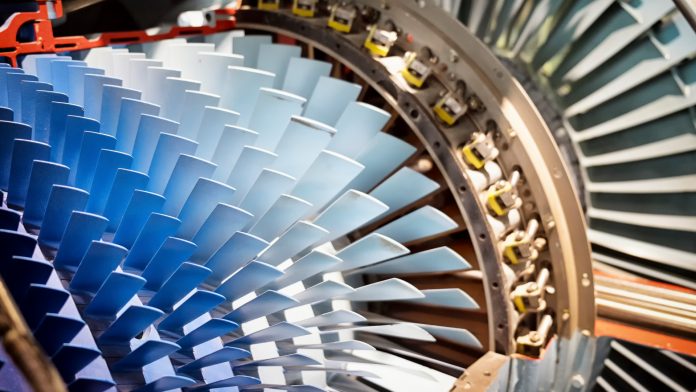Researchers at the Technical University of Munich have developed a process that detects the internal stress of gas turbine buckets.
3D printing has a wide variety of applications in many fields. One such application is the production of buckets for gas turbines. However, the 3D printing process can lead to internal stress in the components, which, in the worst case, can cause cracking.
Now, a research team from the Technical University of Munich (TUM) has successfully used neutrons for the non-destructive detection of this internal stress, which is a significant advancement of the production process.
Gas turbine buckets must be able to tolerate extreme conditions; they are subject to high pressure, high temperatures, and immense centrifugal forces. Therefore, to optimise energy yields, the buckets must hold up to temperatures that are higher than the melting point of the material. This is made possible by utilising hollow turbine buckets that are air-cooled from the inside.
The buckets can be produced using laser powder bed fusion, an additive manufacturing technology whereby the starter material, in powder form, is built up layer by layer using selective melting with a laser.
Intricate lattice structures inside the hollow turbine buckets provide the much-needed stability. “Complex components with such intricate structures would be impossible to make using conventional manufacturing methods like casting or milling,” explained Dr Tobias Fritsch of the German Federal Institute for Materials Research and Testing (BAM).
However, the laser’s highly localised heat input and the fast cooling of the melt pool results in residual stress in the material. Manufacturers typically reduce such stress in a downstream heat-treatment step, but this is costly and time consuming.
As well as this, the stress can also cause damage to the components, even as early as in the production process. “The stress can result in deformations and in the worst cases lead to cracks,” said Fritsch.
Consequently, he examined a gas turbine component for internal stress using neutrons from the Research Neutron Source Heinz Maier-Leibnitz (FRM II). The component was produced using additive production processes by gas turbine manufacturer Siemens Energy, who printed the lattice structure using a nickel-chrome alloy characteristic of those used for gas turbine components.
“We wanted to see whether or not we could use neutrons to detect internal stresses in this complex component,” explained Fritsch.
“We’re very glad to be able to make measurements in the Heinz Maier-Leibnitz Zentrum in Garching; with the equipment provided by STRESS-SPEC we were even able to resolve internal stress in lattice structures as intricate and complex as these.”
Going forward, Fritsch and his team are hoping to build on their work on the internal stress within the component and reduce the destructive stress. “We know that we have to modify the production process parameters and thus the way in which the component is built up during printing,” he said.
“The more localised the heat application is during the melting process, the more internal stress results.”
While the printer’s laser is aimed at a given point, the heat of the point increases relative to adjoining areas. This results in temperature gradients that lead to anomalies in the atomic lattice. “So we have to distribute the heat as evenly as possible during the printing process,” added Fritsch.
In the future, the team hope to do further research into new components and modified printing parameters; they are currently working with Siemens to plan new measurements with the TUM neutron source.









